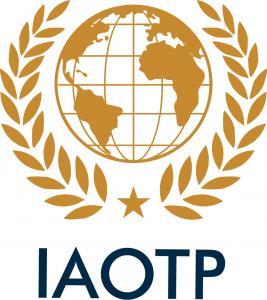The Non-injectable Insulin Market is expected to thrive driven by factors such as technological advancements, growing diabetic population, and increasing preference for non-invasive insulin delivery methods
New York, Jan. 23, 2024 (GLOBE NEWSWIRE) — The global non-injectable insulin market is anticipated to grow steadily at a Compound Annual Growth Rate (CAGR) of 8.6%, reaching a value of US$2.23 billion by 2030, up from US$1.25 billion in 2023.
This market encompasses various insulin formulations tailored for administration without injections, providing alternatives for individuals with diabetes encountering challenges with traditional injection methods or having allergies to injections. Non-injectable options include oral medications, inhalable forms, patches, and other emerging delivery methods.
Currently, there are two non-injectable options available in the market: Afrezza and Exubera. However, Exubera was discontinued due to poor sales performance, leaving Afrezza as the sole product distinguished by its inhalation delivery method.
Market segmentation is based on different product categories, such as pills, sprays, and others, with distribution channels including hospital pharmacies, online stores, and drug stores. The inhalable route has gained significant traction as an alternative to injections, with notable products like Afrezza from MannKind Corporation. Afrezza, having shown promising results in clinical trials and securing regulatory approvals in multiple countries, has the potential to revolutionize insulin administration and improve patient adherence to therapy.
Elevate your business strategy with comprehensive market data. Request a sample report now: https://www.persistencemarketresearch.com/samples/33801
Market Scope:
| Report Coverage | Details | |
| Market Revenue 2023 | US$1.25 Bn | |
| Estimated Revenue 2030 | US$2.23 Bn | |
| Growth Rate – CAGR | 8.6% | |
| Forecast Period | 2023-2030 | |
| No. of Pages | 187 Pages | |
| Market Segmentation | By Product, Distribution Channel and Region | |
| Regions Covered | North America, Latin America, Europe, South Asia & Pacific, East Asia, The Middle East & Africa | |
| Key Companies Profiled |
|
|
Non-injectable Insulin Market Analysis: 2019-2023 vs. 2024-2034 Forecast
In 2023, the market for non-injectable insulins reached a value of US$1,245.80 million, reflecting a growth rate of 12.40% from 2019 to 2023. These insulin formulations, administered without injections, such as inhalable or oral options, offer a more convenient approach, potentially improving patient adherence to treatment plans.
The availability of non-injectable insulin options may appeal to individuals who are hesitant about injections. Advancements in drug delivery technology now enable these formulations to achieve their effects without the need for injections. Research indicates a rising prevalence of diabetes among animals, with a recent study revealing new diabetes diagnoses in 1 out of 10 cats, attributed to their owners.
An example of this progress is Bexacat, approved by the Food and Drug Administration in December, set to be available in the U.S. by year-end. While a similar drug has been approved for human use for about a decade, Bexacat is the first of its kind approved for animals.
In a nutshell, the Persistence Market Research report is a must-read for start-ups, industry players, investors, researchers, consultants, business strategists, and all those who are looking to understand this industry. Get a glance at the report at – https://www.persistencemarketresearch.com/market-research/non-injectable-insulin-market.asp
Market Dynamics:
Market Growth Drivers
The non-injectable insulin market is surging due to the increasing global prevalence of diabetes. Patients, seeking friendlier alternatives, are driving demand for non-injectable options like inhalable and oral insulin, appreciated for their convenience and reduced discomfort. Patient preferences, influenced by needle aversion and lifestyle considerations, play a significant role, emphasizing the need for diverse insulin delivery methods.
Moreover, technological advancements in formulation and delivery systems are propelling market growth. Innovations, such as advanced inhalable insulin devices and improved bioavailability in oral formulations, offer efficient alternatives. Research and development efforts focus on enhancing safety, efficacy, and user experience, attracting both companies and patients to this evolving diabetes management segment.
Market Restraints
Regulatory challenges pose a significant hurdle to the dominance of non-injectable insulin. The intricate regulatory landscape faces difficulties in establishing clear guidelines for approval and commercialization, potentially causing uncertainties and delays. Navigating these complexities is vital for market dominance, assuring safety and efficacy to healthcare professionals and patients.
Additionally, technological adoption hurdles hinder widespread acceptance of non-injectable insulin. Resistance and skepticism toward new delivery methods impact market growth. Addressing concerns through education campaigns is crucial to overcome these hurdles and ensure integration into routine diabetes management.
Opportunities
Expanding therapeutic indications beyond traditional diabetes management presents a substantial opportunity. Exploring applications in obesity-related metabolic disorders or gestational diabetes can unlock new markets and cater to a broader patient base. Rigorous research and clinical trials validate safety and efficacy, positioning market players as pioneers in addressing a spectrum of metabolic conditions.
Furthermore, technological innovation in non-injectable insulin delivery systems offers a compelling opportunity. Investment in advanced inhalation devices and smart technologies for real-time monitoring can enhance user experience and adherence, differentiating products and driving revenue growth. Staying at the forefront of technological advancements positions companies as leaders in the competitive landscape.
Market Segmentation
Product Insights
The pills segment held a significant 45% revenue share in 2022, driven by the convenience and less invasiveness of oral insulin options, appealing to patients averse to injections. The sprays segment is anticipated to grow at a substantial 14.3% CAGR, offering a less invasive alternative and witnessing advancements in drug delivery technology.
Distribution Channels
In 2022, hospital pharmacies claimed the highest market share at 49%, acting as crucial centers for diabetes treatment, influencing patient choices, ensuring consistent availability, and fostering patient trust. Online pharmacies are expected to grow rapidly, driven by convenience, accessibility, cost-effectiveness, and the broader range of products they offer, making them particularly appealing during the COVID-19 pandemic and for patients with mobility challenges.
Regional Insights
In 2022, North America dominated with a 48% revenue share, propelled by high diabetes prevalence, robust healthcare infrastructure, and a favorable regulatory landscape. Patient awareness and acceptance of non-injectable insulin alternatives further solidify North America’s prominent position. Meanwhile, Asia-Pacific is expected to witness the fastest expansion, boasting a remarkable 15.3% CAGR during the forecast period. The region’s substantial share is attributed to rising diabetes prevalence, rapid urbanization, and increasing demand for innovative diabetes management solutions. Government initiatives and collaborations contribute to Asia-Pacific’s significant role in the non-injectable insulin market.
Competitive Intelligence and Business Strategy
Leading companies such as Novo Nordisk, Sanofi, Eli Lilly, MannKind Corporation, and Biocon play a crucial role in shaping the dynamic Non-injectable Insulin market. Competitive intelligence becomes a key tool in navigating this landscape, involving a thorough analysis of competitors’ research, market positioning, and regulatory strategies. This approach provides valuable insights into evolving patient preferences, advancements in delivery technologies, and potential breakthroughs in formulations.
Continuous monitoring of market entry barriers, intellectual property landscapes, and industry collaborations offers a comprehensive understanding of the competitive field. Armed with this intelligence, companies can proactively adapt to market shifts, identify unmet needs, and strategically position themselves for a competitive advantage in the rapidly evolving Non-injectable Insulin market.
Key Questions Answered in the Report:
- What are the contributing factors to the market’s growth trends?
- What is the current market size, and how is it expected to change in the upcoming years?
- What are the key elements exerting influence on the market?
- How is the Non-injectable Insulin market segmented, considering types, applications, fuels, or other relevant factors?
- Who are the major participants in the Non-injectable Insulin market?
- What strategies are these players employing to establish a competitive edge?
- What factors are propelling the expansion of the Non-injectable Insulin market?
- Which regions are anticipated to witness notable growth, and what are the driving factors behind it?
- What recent technological advancements are impacting the Non-injectable Insulin industry?
About Persistence Market Research:
Business intelligence is the foundation of every business model employed by Persistence Market Research. Multi-dimensional sources are being put to work, which include big data, customer experience analytics, and real-time data collection. Thus, working on “micros” by Persistence Market Research helps companies overcome their “macro” business challenges.
Persistence Market Research is always way ahead of its time. In other words, it tables market solutions by stepping into the companies’/clients’ shoes much before they themselves have a sneak pick into the market. The pro-active approach followed by experts at Persistence Market Research helps companies/clients lay their hands on techno-commercial insights beforehand, so that the subsequent course of action could be simplified on their part.
Contact
Persistence Market Research
Teerth Technospace, Unit B-704
Survey Number – 103, Baner
Mumbai Bangalore Highway
Pune 411045 India
Email: [email protected]
Web: https://www.persistencemarketresearch.com

![]()
Originally published at https://www.einpresswire.com/article/683232620/non-injectable-insulin-market-size-to-exceed-usd-2-23-billion-by-2030-with-a-cagr-of-8-6-according-to-persistence-market-research





